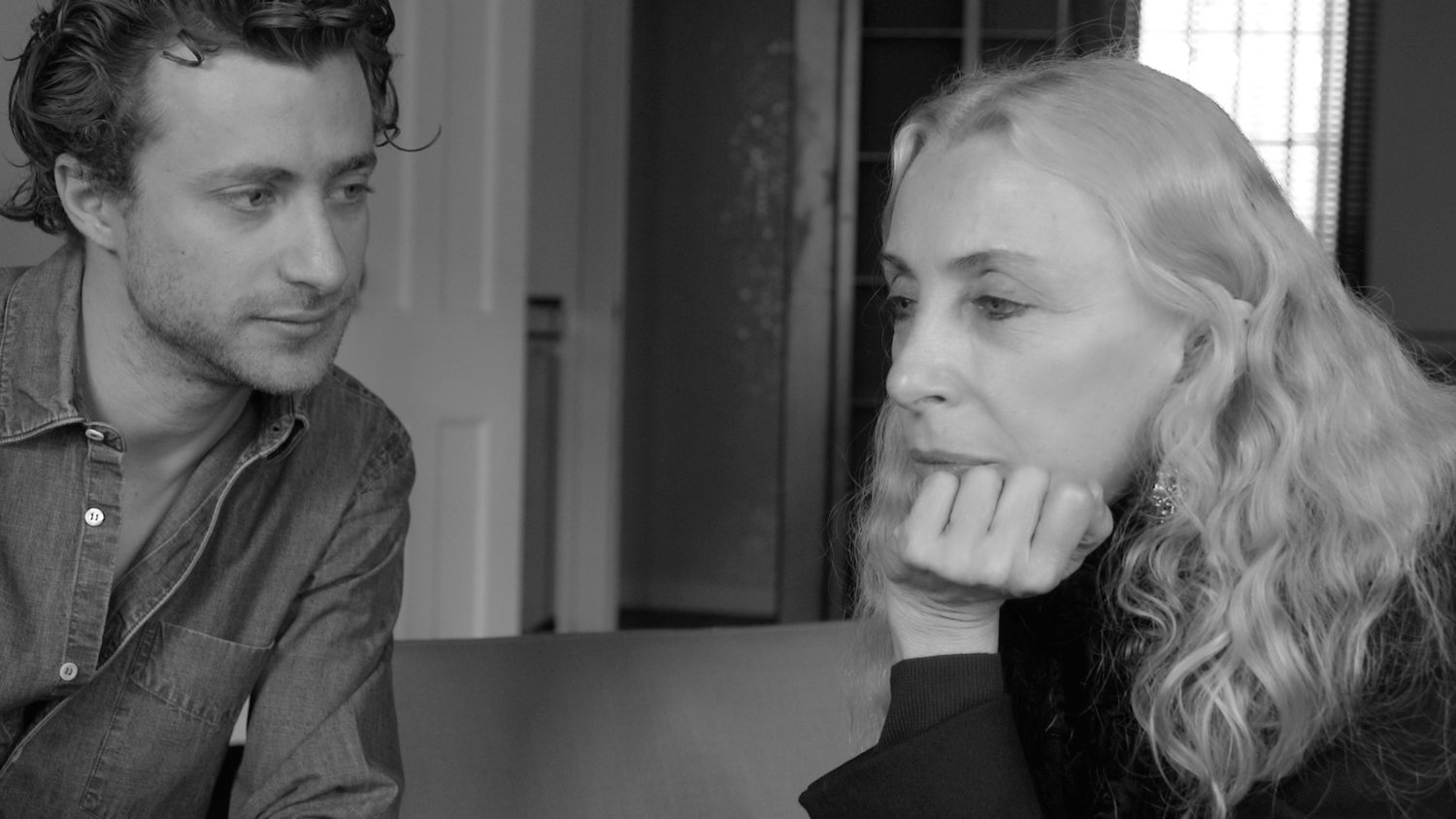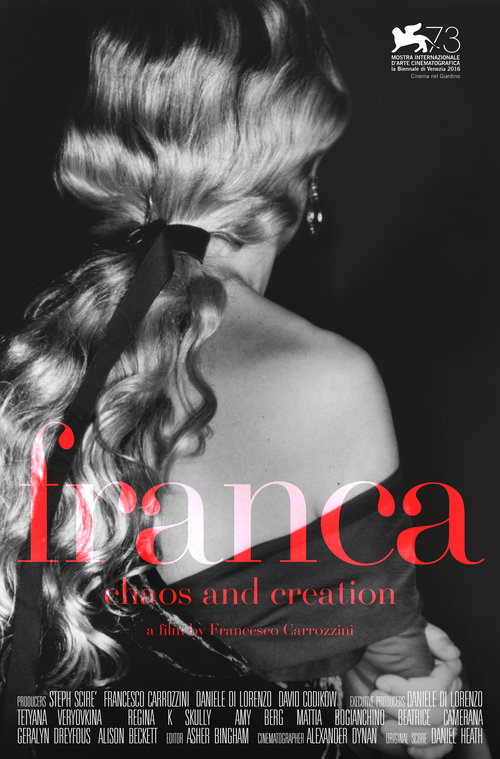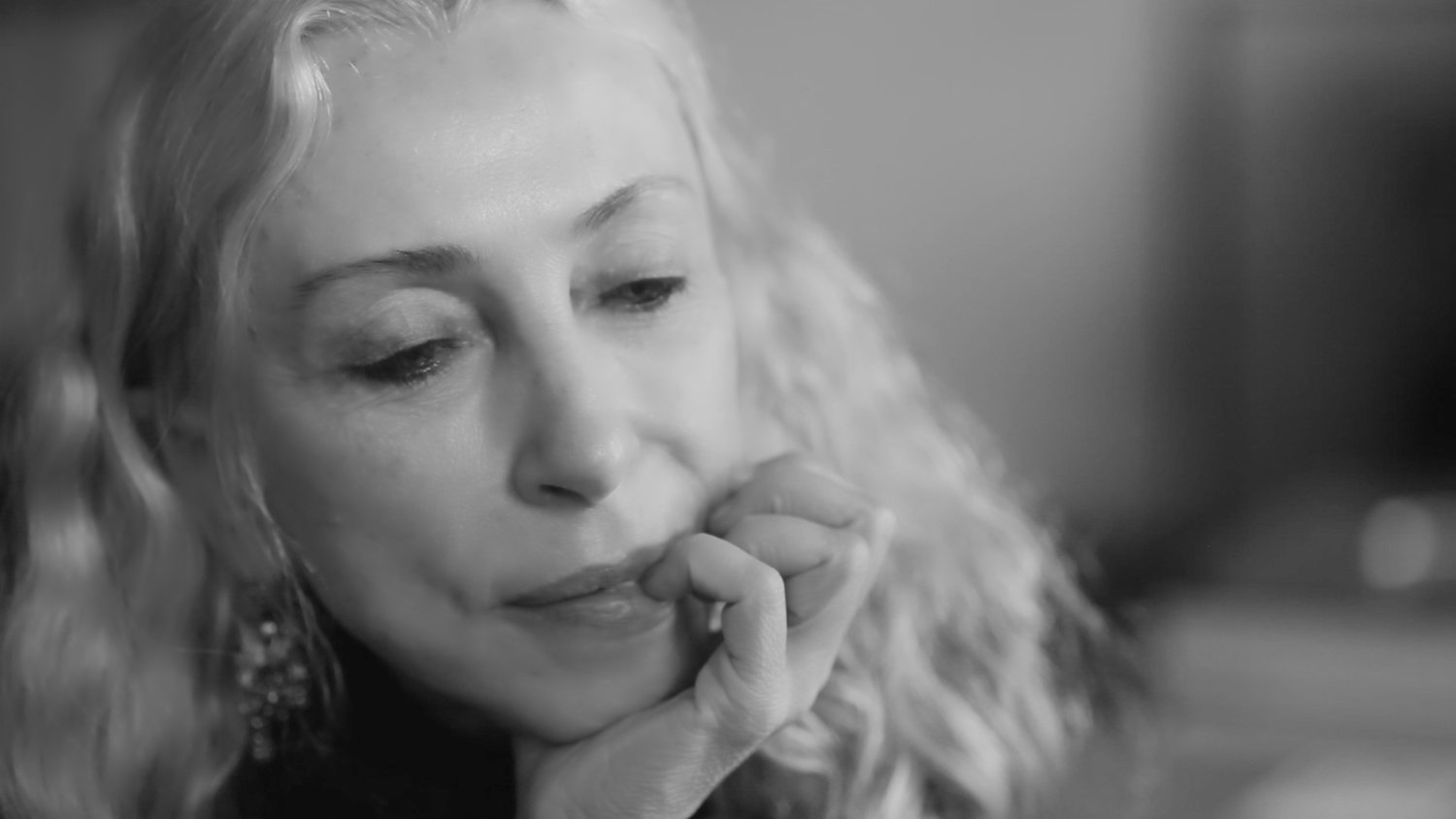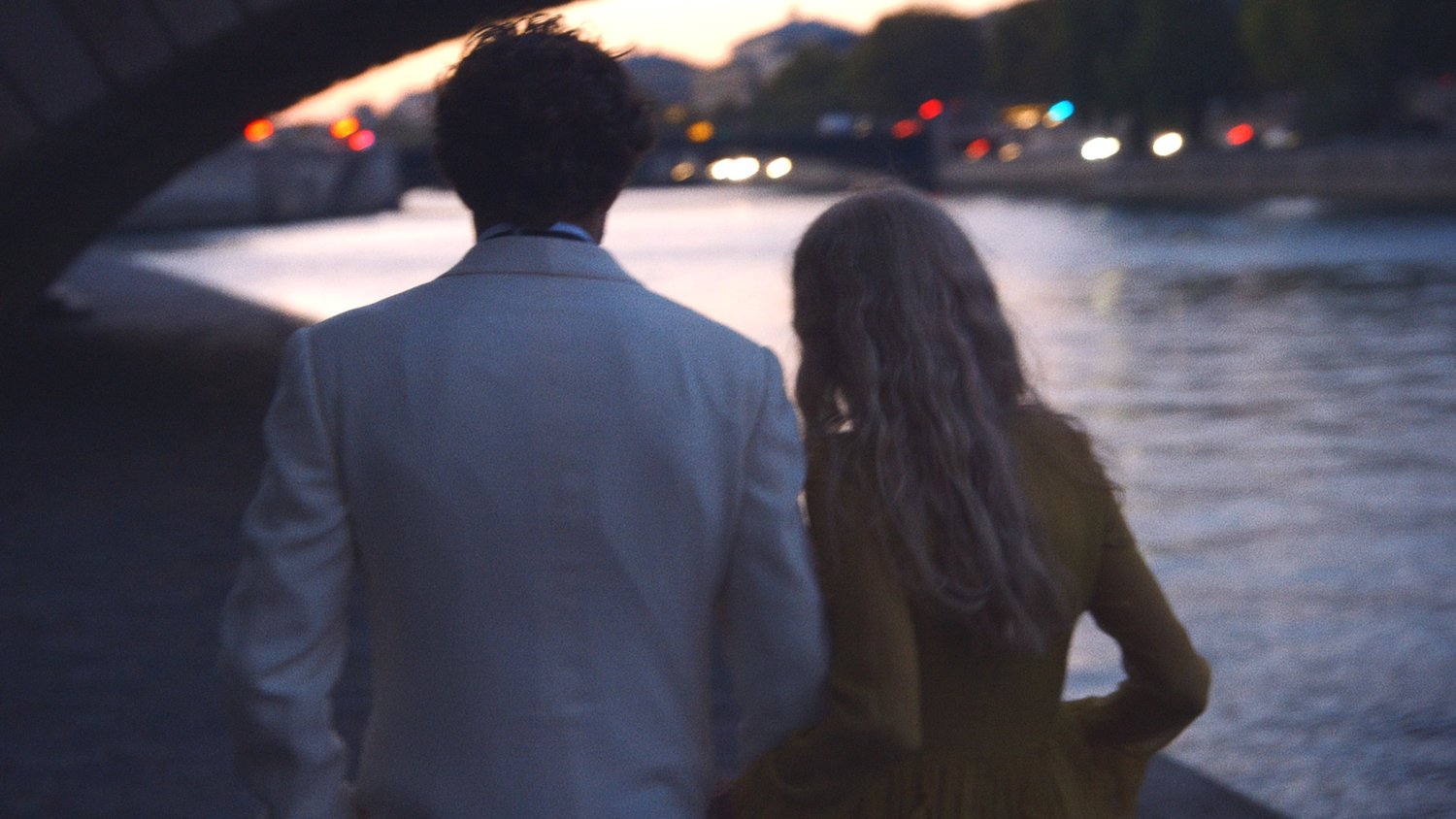A still from Carrozini’s film, now available on Netflix.
WRITTEN BY ROSS DIAS
Francesco Carrozzini had just shown his mother the first cut of his documentary, Franca: Chaos and Creation, about her life’s work at Italian Vogue. While watching her son’s production, the humorously blunt Franca Sozzani looked at him and remarked, “Congratulations, this is shit.” Dejected, Carrozzini sought the advice of Baz Lurhmann, an Oscar-nominated director and trusted friend, who told him the documentary was good, but could be better. “Do one thing – and this is the best advice I can give you – make the movie only you can make.” To Carrozzini, Sozzani was more than just a mother. She raised him by herself and when he left Italy for a life and career in New York City, their relationship blossomed into a close friendship. Occasionally, when he photographed for publications under Italian Vogue, she was his boss.
Carrozzini, who spoke to me on the day of his film’s premiere at Toronto Fashion Week, was raised in an environment unfamiliar to many: surrounded by women who were leading the charge within female-driven industries. His aunt, Carla Sozzani, is behind the Italian art and fashion concept, 10 Corso Como, and his cousin, Sara Maino, is renowned for introducing emerging designers to Italian Vogue’s audience as their head of talent. “After my grandfather died, for many, many years my Christmas dinner would be my mum, my grandma, my aunt, and my cousin. It influenced me greatly. I see myself as different, in that sense, from a lot of my friends.”


Another still from Carrozini’s film.
As an eight-year-old, Carrozzini was convinced his mother worked at a newsstand selling magazines. He was partially right: Sozzani did sell magazines, albeit by the truckload. For longer than a quarter of a century, before her untimely death in 2016, Sozzani headed Italian Vogue with a gusto unheard of at any international edition of the fashion staple, churning out controversial and genre-challenging “special issues” that featured fashion spreads of global significance, covering racism, plastic surgery, domestic violence, war, and the degradation of the environment. It was proof that fashion has always served as a reflection of the times.
Part satire, part social critique, the images from these issues, however heavily dissected at the time, have now permanently entered the lexicon of fashion imagery and magazine publishing. Be it a model whose face is wrapped in gauze after a cosmetic procedure, or one in a feathered dress lying in a slick pool of oil a few months after the Gulf of Mexico oil spill, Sozzani’s direction was always about more than just “fashion.” Her revolutionary ‘Black Issue’ in 2008, which featured only black models in its pages, was reprinted three times over and can now be found on eBay retailing for more than 30 times the cover price. She was convinced to do the issue after seeing the widespread rejection of diversity in fashion pages and on the catwalks. The special issue was her proudest moment as an editor.


The intimacy between mother and son drives the documentary. “It’s not a cult film,” Carrozzini says, “but it’s a film about a person that was cult, herself. She taught me to be very courageous, even at the cost of being a little controversial.” Carrozzini is granted a level of access, frankly, only he could do justice. Who else could film his mother serenely gazing into a mirror and putting on her jewelry before an event? Sozzani’s successes have been well-documented outside the world of her sons’ documentary, but her personal relationships have been a mystery, sometimes even to her son. While filming his mother sitting in the backseat of a moving car, for the first time Carrozzini learned that his father was married to another woman at the time of his conception. He also learns that his father was her greatest love. “This film is a bridge between two different lives for me,” Carrozzini says. “A life where I was a photographer, where I had a mother, where I saw the world in a different way. And then a world where I’m more of a filmmaker, where I have no mother and I’m looking at the world completely differently.”
““IT’S NOT A CULT FILM,” CARROZZINI SAYS, “BUT IT’S A FILM ABOUT A PERSON THAT WAS CULT, HERSELF.””
Sozzani’s solitude is a pre-occupation of the film. Carrozzini asked both Peter Lindbergh (a world-renowned photographer) and his mother if they ever felt love for one another. Lindeberg said yes, Sozzani said no. At the Venice Film Festival world premiere of his film, three months before her death, Sozzani’s face was in her hands and Lindbergh looked at her with tears rolling down his face as they heard each other’s responses for the first time. But Sozzani’s independence was a source of strength for her, allowing her to run free with her ambition and creativity. If she were to advise a woman in her shoes today, Carrozzini doubts a change in attitude. “She was very firm on being a strong woman and being an achiever, so I think she would have said ‘Do what I did.’ The movie wants to create a bit of friction. Was she 100 percent happy? Are any of us 100 percent happy?” As for himself, “If I can do both, great. If I can’t, I’d rather prioritize my happiness over leaving a mark.”


Franca gazes during a scene of Franca: Chaos and Creation.
At the following Venice Film Festival, actress Julianne Moore was awarded for her talent and charity in Sozzani’s name, an annual addition to her legacy by Carrozzini, her sister, and niece. “Even though one’s best legacy is their children,” Sozzani says in the film, “if you leave something independently of your family, you become part of history.” The award is close to Carrozzini’s heart. It was in Venice where mother and son would enjoy films alone together, to cap off the summer with “three days in a magical place.” In the future, Carrozzini will be releasing a book based on the film, but he is also planning something less conventional. “We have to think about the full story. She’s dead and she died because of a late-diagnosed cancer. This is something that is happening to people every day. I lost both parents for the same reason. I want to do something where we help screen people.”
“It’s strange because it’s now nine months since she passed and I still feel like she’s here. I almost feel like I am thinking with her mind. She had such a strong presence that it’s so hard for it to fade. The fact that she had a very strong spirit – it makes her live,” Carrozzini says. In her features, Sozzani brought issues to light that people refrained from discussing even outside the walls of fashion. Her work helped pave the way for those voices in the industry where social, political, and economic challenges are brought to the public’s attention daily. If anything, Sozzani’s legacy will not be first and foremost as a Vogue editor, but as a woman that fearlessly went against the current and challenged us to think about the world around us.
“She came before others. She understood that the world has to also communicate through fashion, the last place you would expect it to. Fifteen years later, we are in a world where nothing excludes anything, where everything is interconnected. It’s not a world anymore where fashion is fashion, music is music, or film is [just] film. She lived that transition in a very particular way.”
PHOTOS COURTESY OF FRANCA THE MOVIE LLC








